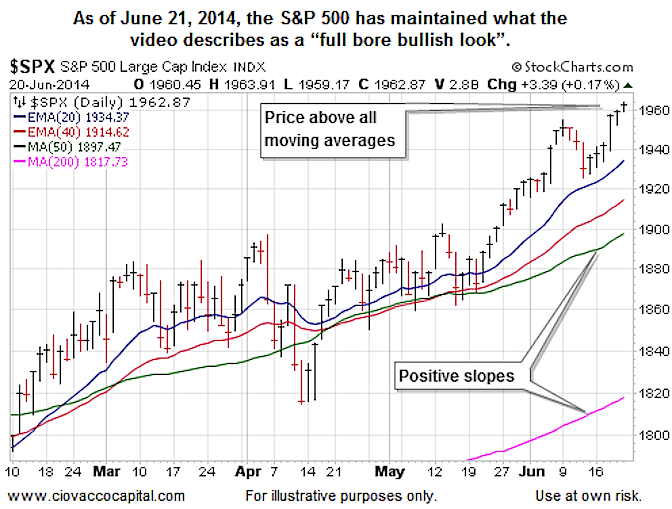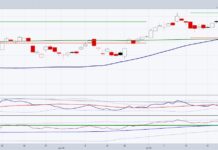While you have probably read countless bearish and inaccurate investing forecasts over the past 24 months, the objective of this article is not to fearmonger, but rather to cover some rational “that makes sense to me” concepts that may help investors mitigate, not eliminate, portfolio risk in the next inevitable bear market. Yes, inevitable; it not a question of if a bear market is coming, but when. The only question is will you be ready when the bear pays a visit sometime in the next few years? For the record, based on what we know as of the writing, the present day climate does not align with an imminent bear market.
Markets Are Harder Than Weather
We respect the high degree of complexity found in various weather systems. While the heading above is debatable, if you consider the following, we believe it is not even a close call…markets are much more complex than weather:
- Asset prices are impacted by the decisions of billions of people around the globe.
- Asset prices are influenced by the movements of numerous interrelated markets (stocks, bonds, commodities, currencies, etc.).
- Geopolitical events can seemingly “come out of nowhere”; something we recently experienced with Iraq.
- Markets are impacted by earnings, interest rates, health of the banking system, regulations, political events,…and even the weather.
Weather Forecasting Difficult After Day 8
If we believe economic and market forecasting is more challenging than weather forecasting, then a logical question to ask is how far into the future can professional meteorologists add value with their forecasting models? For the answer, we turn to a segment from Nate Silver’s book, The Signal And The Noise – Why So Many Predictions Fail:
“But the further out in time these models go, the less accurate they turn out to be. Weather forecasts made eight days in advance demonstrate almost no skill. And at intervals of nine or more days in advance, the forecasts were actually a bit worse than climatology.”
If we cannot add value with a 10-day weather forecast, then how prudent is it to allocate your investments based on annual forecasts and predictions from Wall Street experts?
If Weather Forecasts Are Not…Then Market Forecasts…
If weather forecasts are not particularly useful looking out just eight days into the future then how accurate is an economic or market forecast that looks even just several months down the road? Again, the answer is debatable, but if we believe markets are harder than weather, and weather forecasts are not all that useful when you hit day eight, then we can surmise that stock market forecasts looking out more than eight days are probably not particularly helpful or useful. If you want a real world example of financial market forecasting, see the track record for professional forecasts presented in The Most Important Thing For 2014.
Is There A Better Way? Navigating In 2008
Financial markets are difficult regardless of which approach you use. The previous sentence applies to any probabilistic model, including our market model. However, if you watch the video below focusing on “monitoring and adjusting” rather than “forecasting and hoping”, you will probably agree that there are some logical things investors can do to improvement their odds of success. In terms of the video, the simple method presented illustrates concepts that can mitigate, not eliminate, investment risk during the next bear market in stocks.
How does the “2008 look” shown in the video compare to the present day? The present day looks much, much better, telling us the aggregate interpretation of all the fundamentals (earnings, Fed policy, geopolitical events, valuations, etc) remains positive and bullish for stocks. As long as the chart below maintains its current look, the odds will be favorable for equity investors.
How Do Fundamentals Come Into Play?
The video above uses charts to monitor the market’s pricing mechanism. Does that mean fundamentals don’t matter? No…fundamentals are behind every move in any asset market. Charts are one of many methods to monitor the aggregate interpretation of all the fundamentals, including earnings, valuations, the Fed, and even the impact of the difficult-to-forecast weather. As of June 20, 2014, our market model tells us the aggregate interpretation of the fundamentals remains constructive for stocks. From Zacks Investment Research:
With not much on the economic calendar, stocks today will likely reflect the positive momentum generated by Wednesday’s Fed meeting… The Fed’s dovish commitment is a very powerful elixir for this market, trumping any other catalyst on the horizon. And we don’t have much in terms of economic or corporate earnings catalysts over the next couple of weeks anyway. On the economic docket next week are a couple of housing reports and another look at the Q1 GDP read. The GDP report is essentially record keeping at this stage, with the greater negative revision to the Q1 growth pace unlikely to weigh on investors’ outlook for the current and coming quarters. Data for the current quarter has been consistently positive enough that GDP growth estimates remain north of 3%, with some of the more aggressively optimistic estimates above the +4% level.
Investment Implications – Odds Still Favor Stocks
How do we use all this? Our approach is to meticulously monitor the market’s tolerance for risk, then allocate our portfolios in line with the evidence we have in hand, rather than making any assumptions about what tomorrow looks like. From there, monitor again and adjust if needed…rinse and repeat.
The stock market’s risk profile has been improving fairly steadily since April 11. Consequently, our market model has allowed us to incrementally increase our equity allocation (SPY) over the past 15 weeks. Over that period, we have reduced our bond exposure (TLT) twice to stay in line with the improving climate. We continue to maintain exposure to leading sectors, such as transportation (IYT).
Financial Forecasting Paired With Portfolio Flexibility
Most stock market forecasts are not particularly helpful, but there are a small percentage of probabilistic models that add value from a risk management perspective. We are not fans of forecasting, but our market model, like others, produces short-term probabilistic forecasts based on observable evidence. The same can be said for many market and economic models. The key is to update your forecast as the inputs change and to remain flexible enough to adjust your portfolio when the model calls for it. Our approach is one of many that can add value. One of the greatest things about the financial markets is there are countless ways to skin the risk management cat.
Note that this article was published as a Short Take on Ciovacco Capital.
Follow CCM on Twitter: @CiovaccoCapital.
Any opinions expressed herein are solely those of the author, and do not in any way represent the views or opinions of any other person or entity.










